The momentum for the organic food movement is strong, and figures to remain that way—so much so that many consumers may begin to buy organic products almost by default, as it just seems to be the thing to do these days. With such a high profile, and more people being brought into the organic fold every day, the industry’s collective message about the benefits and unique qualities of organic food becomes more important than ever.
“Organic food offers consumers a clear alternative in the marketplace,” says Laura Batcha, executive director and CEO of the Organic Trade Association (OTA), Washington, D.C. We’ll look at some of the reasons why, and how the industry is spreading awareness about them. The complex and evolving relationship between the non-genetically modified organism (GMO) movement and the organic industry is also up for discussion, as are the future of organic production and organic product trends.
Relaying the Message
There is a great deal to say about the benefits of organic food, but what the industry chooses first and foremost to promote to consumers is another matter. Currently, much of the messaging centers on GMO avoidance, according to Batcha. “A recent survey by the OTA showed that the desire to avoid GMOs is one of the top reasons that parents purchase organic food,” she says. The organic label on a food product means that no genetically engineered ingredients were used in its production, Batcha explains, so for consumers wishing to steer away from GMOs, organic is a clear choice.
“But it is also important for those within the 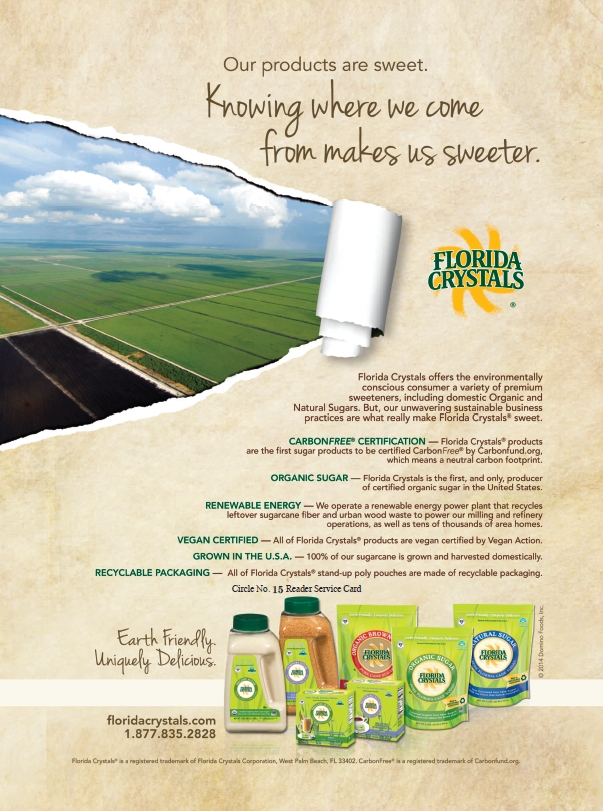 organic sector to communicate that organic products provide many more benefits for individuals and our environment than just being non-GMO,” Batcha says. By rule, certified organic food is produced without the use of toxic and persistent synthetic pesticides, synthetic fertilizers, synthetic additives and preservatives, growth hormones, antibiotics and sewage sludge, which can contain toxic heavy metals.
organic sector to communicate that organic products provide many more benefits for individuals and our environment than just being non-GMO,” Batcha says. By rule, certified organic food is produced without the use of toxic and persistent synthetic pesticides, synthetic fertilizers, synthetic additives and preservatives, growth hormones, antibiotics and sewage sludge, which can contain toxic heavy metals.
On the pesticide front, John Roulac, CEO and founder of Nutiva, Richmond, CA, and cofounder of GMO Inside, notes that the danger goes beyond residues that may be present on foods themselves. “It’s important to remember that when pesticides are used on crops, they also enter the environment. So these chemicals become rampant in soil, ground water and oceans as well as being huge health hazards for farm workers,” he says.
Research has verified that organic products can minimize consumer exposure to harmful residues, Batcha says. Also, because organic rules do not allow antibiotics in the raising of livestock, organic does not contribute to the development of antibiotic-resistant bacteria that can harm consumer health. Summarizing the view the industry would like to deliver to the public, she says, “Organic agriculture is better for the environment and uses practices that are healthy for farmers and their families, the local water systems and the whole ecosystem, minimizing exposure to harmful residues in the environment and in our food.”
“Organic foods offer many tangible benefits that consumers can definitely feel good about,” Roulac says. Beyond the currently popular non-GMO slant, there is the notion that at least some organic foods tend to pack more nutritional punch than their conventional counterparts. Roulac references a recent study out of Newcastle University that has created a lot of buzz due to its findings that organic food contains higher amounts of certain healthful antioxidants (see NewsLinks on page 12). “Evidence continues to mount of a nutritional differentiation for organic products: from organic soybeans and organic milk to the overall findings of the major meta-analysis led by researchers from Newcastle University,” Batcha says.
Research is also taking place, according to Roulac, into the possible impact of organic agriculture on climate change. “Beyond improved nutrition, organic farming and grass pasture systems do a fantastic job locking carbon in the soil from the atmosphere. Rodale Institute, among others, is doing important work in this area,” he says. Theresa Marquez, mission executive at Organic Valley, La Farge, WI, thinks this is a key factor in favor of organic. “In the next 10–20 years, we are going to be looking at ways to decrease our carbon and organic will be a solution. Carbon sequestration will have an impact on producing food and mitigating climate change,” she says.
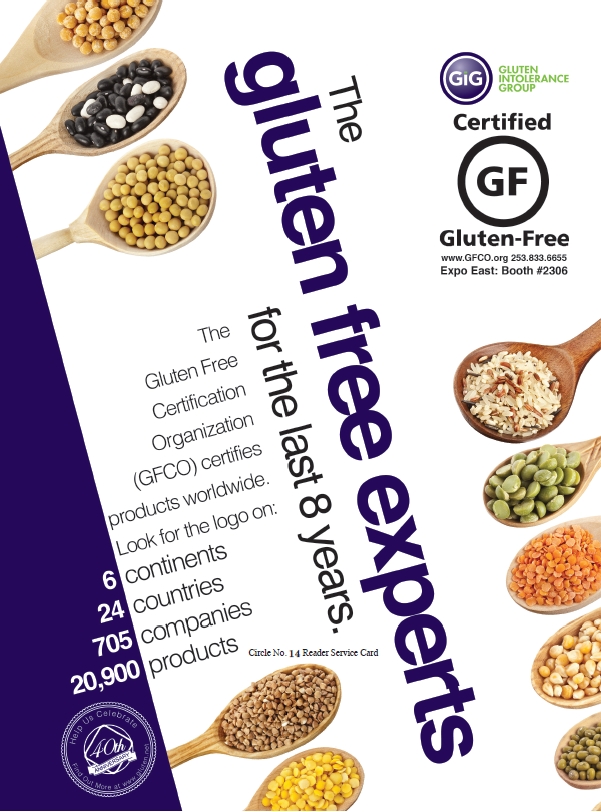 With all of these positives to investigate and share, organic can proudly tell its story and challenge its detractors directly. “The OTA works in collaboration with The Organic Center to educate consumers and publicize the benefits of organic agriculture,” says Batcha. A proactive approach is used to share news and engage in public outreach efforts, with the message that organic has benefits, and those benefits can be affordable. “In 2013, OTA and The Organic Center undertook a campaign showing how families can afford to eat organic foods. We will continue to undertake more efforts to stress the value of organic food,” she says.
With all of these positives to investigate and share, organic can proudly tell its story and challenge its detractors directly. “The OTA works in collaboration with The Organic Center to educate consumers and publicize the benefits of organic agriculture,” says Batcha. A proactive approach is used to share news and engage in public outreach efforts, with the message that organic has benefits, and those benefits can be affordable. “In 2013, OTA and The Organic Center undertook a campaign showing how families can afford to eat organic foods. We will continue to undertake more efforts to stress the value of organic food,” she says.
There are, however, some difficult and longstanding hurdles to overcome. “Consumer poll results still indicate that consumers are confused by the terms organic, natural and local, and often give ‘natural’ the attributes that only organic offers,” Batcha says. Likewise, they often don’t understand that local doesn’t necessarily imply organic, and vice versa. “There is much need for addressing this confusion,” she adds.
A campaign called Organic Voices (www.onlyorganic.org) was established so that the industry can speak with one voice to educate the public, and especially to let people know that “natural” does not mean organic, says Melissa Hughes, director of government affairs at Organic Valley, and member of the board of directors for OTA, EWG and Organic Voices.
Using social media channels and consumer-oriented press outlets, Batcha says that OTA seeks to clarify certified organic’s role as a Gold Standard for meaningful and regulated label claims in the food industry. This task of clearing up the confusion is a primary reason for the push toward an organic “check-off” program. Such a program would be administered by the U.S. Department of Agriculture (USDA), and would task organic industry stakeholders nationwide with funding research and consumer education.
Communication is vital, Roulac believes, and the industry can do a better job of it. The gap in consumer awareness is currently being exploited. “The term ‘natural’ is used by many companies to create an aura of health around products that contain ingredients that are clearly not healthy,” Roulac says, adding that the best guarantee consumers can have is to seek out the USDA Organic seal and the Non-GMO Project Verified logo.
Ultimately, the precautionary principle will drive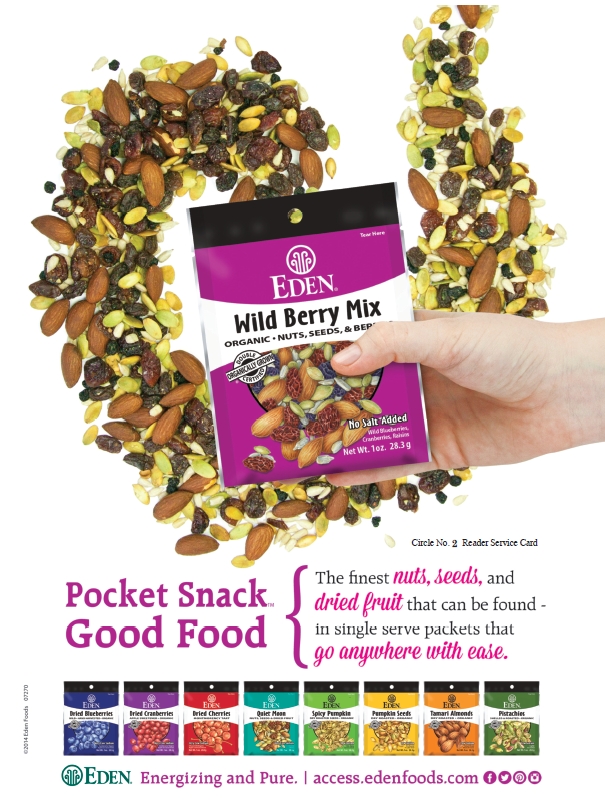 shoppers to organic, says Marquez. “Consumers are realizing they would rather invest in their family’s health now than pay for it later in medical costs,” she says. Mothers are primarily the ones entering the organic market as shoppers, Marquez goes on to say, and “they are hearing that organic has more omegas, more antioxidants, less pesticides and less heavy metals and are making the switch.”
shoppers to organic, says Marquez. “Consumers are realizing they would rather invest in their family’s health now than pay for it later in medical costs,” she says. Mothers are primarily the ones entering the organic market as shoppers, Marquez goes on to say, and “they are hearing that organic has more omegas, more antioxidants, less pesticides and less heavy metals and are making the switch.”
Non-GMO: Friend or Foe?
From labeling laws, to safety and regulatory debates, to the dramatic growth in sales of non-GMO certified products, the non-GMO trend is a force to be reckoned with. Though organic and non-GMO, regarded as distinct industries, might seem to be allies moving in the same direction, there are perhaps some twists and turns in the relationship. Some worry, for instance, that consumers have begun selecting, and companies have begun promoting, non-GMO certified products as a cheaper alternative to certified organic (1).
Batcha describes the non-GMO movement as important to organic, and the growing number of non-GMO claims in the marketplace as a positive sign. “The main concern with the growing presence of non-GMO claims is that consumers might become confused and lose sight of the meaning of organic,” she says. The two are not equivalent, she reminds us. While a non-GMO certified product is not necessarily organically produced, an organic-certified product is produced without the use of GMOs and possesses other benefits already discussed.
To underscore that distinction, OTA has taken the position that USDA National Organic Program (NOP) certification is sufficient to support a non-GMO claim. According to Batcha, the OTA’s position statement reads in part, “OTA believes that NOP certification provides the best assurance of enforcement, conflict-free verification and public participation.”
In the near future, it is possible that mandatory GMO labeling laws will be established in many states, or perhaps even nationally. The question arises whether products with USDA organic certification, or products made with organic principles in general, will be considered to automatically qualify as non-GMO with respect to any challenge under these laws.
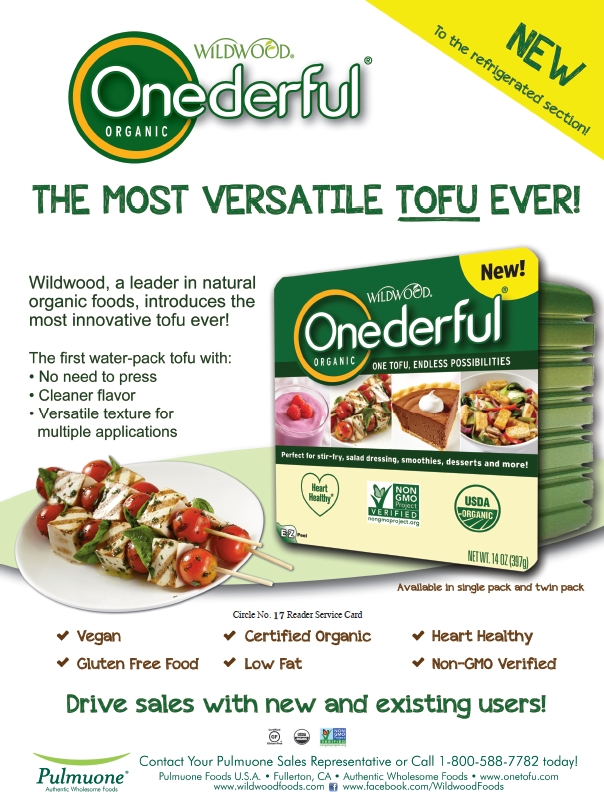 OTA’s position is clear, and others follow suit with theirs. John Foster, director of quality, food safety and organic integrity at Earthbound Farm, San Juan Bautista, CA, says his company believes all consumers have a right to know what’s in their food and how it was produced, and supports mandatory labeling of food containing GMOs. He also states that consumers can trust the USDA Organic seal. “This rigorous organic certification certainly should suffice as a non-GMO label, if that becomes necessary,” Foster says. Hughes adds: “Most of the proposed labeling laws recognize this and exempt certified organic from labeling.”
OTA’s position is clear, and others follow suit with theirs. John Foster, director of quality, food safety and organic integrity at Earthbound Farm, San Juan Bautista, CA, says his company believes all consumers have a right to know what’s in their food and how it was produced, and supports mandatory labeling of food containing GMOs. He also states that consumers can trust the USDA Organic seal. “This rigorous organic certification certainly should suffice as a non-GMO label, if that becomes necessary,” Foster says. Hughes adds: “Most of the proposed labeling laws recognize this and exempt certified organic from labeling.”
Roulac also references current organic regulations, which dictate that certified organic products cannot include crops made with genetically modified seed. He explains that his company took the extra step to become Non-GMO Project Verified, as they believe it provides even greater transparency. “While we think it’s the right thing to do, it’s ultimately up to every manufacturer to decide how they want to communicate and build trust with their customers,” Roulac says.
Some evidence, including recent polls, shows non-GMO beginning to rival or even surpass organic as an influential label claim in the minds of shoppers (2). Gael Orr, communications manager for Once Again Nut Butter, Nunda, NY, has spotted this shift as well, and has some idea as to what’s behind it. “I think consumers are still either unaware or untrusting that certified organic means that their purchased items are free of GMOs,” she says.
Based on conversations and comments his company’s consumer affairs team receives, Foster echoes the same sentiment: people may not understand that organic standards prohibit genetically modified inputs. He notes, however, that avoiding GMOs is only a recent concern for consumers, so the organic industry had been focusing the message on what previously attracted the most attention, namely avoidance of toxic and persistent chemicals, artificial hormones and antibiotics. “Now that there’s a growing concern about GMOs, messaging about USDA Organic as the original non-GMO label is on the rise,” Foster says.
Orr does not believe the strength of non-GMO is anything for  organic to worry about. “I think where organic gains traction is in the responsibility of how crops are grown and the environmental impact of organic foods. Organic farming is more sustainable and better for the planet,” she says, adding that merely non-GMO (not organic certified) foods cannot necessarily make the same claims.
organic to worry about. “I think where organic gains traction is in the responsibility of how crops are grown and the environmental impact of organic foods. Organic farming is more sustainable and better for the planet,” she says, adding that merely non-GMO (not organic certified) foods cannot necessarily make the same claims.
“I think its great news that the non-GMO movement has gained such great traction,” Roulac says. The recent success of GMO Inside in pressuring General Mills to remove GMOs from its classic Cheerios “demonstrates the power of consumer sentiment on this issue,” he says. Ideally, Roulac believes, organic and non-GMO should go hand-in-hand toward providing healthy food for people and sustainable production for the environment.
Organic’s Present and Future
Organic is a dynamic and evolving industry. One issue that presents both reasons to hope and worry is supply and demand. Batcha says that while in 20 years, consumer confidence in the organic label should remain strong, there is uncertainty for the industry. “We are seeing demand outpace supply of domestically grown organic agricultural products,” she says.
While the industry has been able to rely somewhat on imported organic products, this practice raises its own concerns, and Batcha says it is preferable that demand for organic products be met by an increase in domestic production. “The organic industry is actively investigating ways to reduce organic production barriers,” she says.
The pressure is growing for more farmers to grow organic foods, Orr believes. Issues like climate change and the increasing environmental consciousness of the average consumer drive the market for organic food, which Orr notes continues to expand rapidly. Currently, she acknowledges, there are supply issues for certain organic commodities. Increased demand 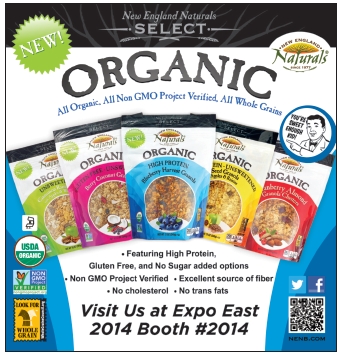 and short supply will cause raw material and finished good prices to increase, and we are already seeing this occur, she says.
and short supply will cause raw material and finished good prices to increase, and we are already seeing this occur, she says.
But, these forces will also motivate farmers to supply more. Current organic farmers will plant more organic crops, and Orr believes new farmers will enter the market, as well. “Whenever you see greater margin that is earned on any commodity or finished good, more competitors will enter the marketplace to compete for that higher profit margin, and more entries into the organic market will mean more commodities, resulting in downward pressure on price,” Orr says.
Citrus greening disease represents a current supply issue that potentially affects the entire food industry and all consumers, not just organic food and organic shoppers. The disease has begun to impact citrus orchards worldwide, rendering fruit like oranges unfit for consumption. It is considered to pose a serious threat, and the organic industry has met the challenge with a commitment to finding a solution. The Organic Center announced in July that it would seek funding for a multi-year study to find organic solutions for combating citrus greening. The hope is to help all farmers, not just organic farmers, to ward off the disease without having to resort to chemicals or genetic engineering.
The seemingly inevitable expansion of the market puts the evolution of organic standards into the spotlight, as well. How closely will future organic rules and practices resemble those from when the industry started? Will oversight increase? “The last five years of standards development from the NOP have been marked by increased scrutiny, clarity, and rigor,” Batcha says.
She gives some examples, including 2010’s finalization of the pasture rule, which guarantees that organic ruminant animals, such as cows, are grazed on organic pastures. In 2011, it became required that all third-party organic certifiers use residue testing to deter fraud and prevent contamination of  organic food with unapproved substances. Numerous training modules and guidance documents have been released by NOP to help organic operations and to achieve consistency between certifiers in their efforts to enforce organic standards. In 2013, U.S. Secretary of Agriculture Tom Vilsack announced that USDA would be providing guidance on organic production to other USDA agencies.
organic food with unapproved substances. Numerous training modules and guidance documents have been released by NOP to help organic operations and to achieve consistency between certifiers in their efforts to enforce organic standards. In 2013, U.S. Secretary of Agriculture Tom Vilsack announced that USDA would be providing guidance on organic production to other USDA agencies.
Recent years have also seen the harmonization of domestic organic standards with those of other major markets, according to Batcha. She says these organic “equivalency agreements” between the United States and Canada, the European Union and Japan promote trade across regions and help protect organic standards, among other benefits.
“Overall, we are seeing NOP significantly improve its program, increase its oversight and enforcement of the organic standards, and use its power to levy civil penalties for fraudulent activity,” says Batcha. A total of $87,000 in fines were issued to 19 farmers and food companies last year for misusing the organic label. She adds that organic farmers and processors receive inspections at least once per year by a competent and highly trained inspector, and says that all of these enforcement actions build consumer confidence in the organic label.
Putting a fine point on it is Hughes, saying, “We have the highest standard in the world—standards that include full public transparency, criminal penalties and subpoena powers. Standards are becoming tougher, not polluted.”
Some voice concerns over the NOP’s decision-making process. Roulac says that a major policy decision regarding the way the NOP operates came down recently. “Ending the sunset clause for synthetics is very disturbing in my view,” he says. The sunset clause was a rule that had required exempted synthetic substances, meaning they were allowed to be used in organic production, to be reviewed and reinstated every five years. The new policy instead allows them to remain on the exempt list without a vote to reinstate, and a vote is now required to remove any substance from the list.
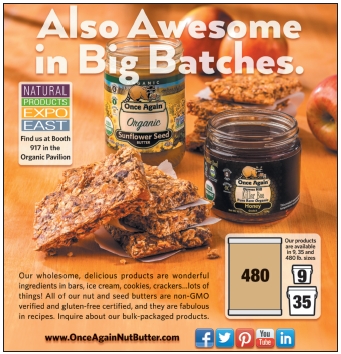 Organic stakeholders should also be aware, as the industry grows, of any attempts by the conventional food industry to exert its influence against the organic sector, according to Roulac.
Organic stakeholders should also be aware, as the industry grows, of any attempts by the conventional food industry to exert its influence against the organic sector, according to Roulac.
The USDA organic standards comprise one of the most rigorous certification programs in existence, Foster argues. The National Organic Standards Board, which he characterizes as a very conservative group of people, scrutinize each change to policy. “For example, with regard to allowable materials, the vast majority of petitioned materials have failed to be listed in recent years,” Foster says. He adds that in the end, sales of organic foods have increased consistently over many years, at a rate bettering all other food categories. He feels that this demonstrates people’s trust of the process.
The Organic Bump
Specific sectors of the organic food industry, even particular products, seem to receive more interest and get a boost in sales whenever there are news reports about safety issues with conventional foods. This also tends to happen when consumers begin looking for more natural, unprocessed forms of certain foods, or when positive news comes out about organic food. Let’s see if our experts can predict the next organic food bump.
Organic fruits and vegetables are in line for increased attention, according to Batcha, as she says the large meta-analysis out of Newcastle University, published in the prestigious British Journal of Nutrition, will be noticed by consumers. She says this study reevaluates the issue of nutritional benefits with a more inclusive, statistically accurate model. After analyzing 343 studies, an international team of experts found that “organic crops and crop-based foods are up to 60% higher in a number of key antioxidants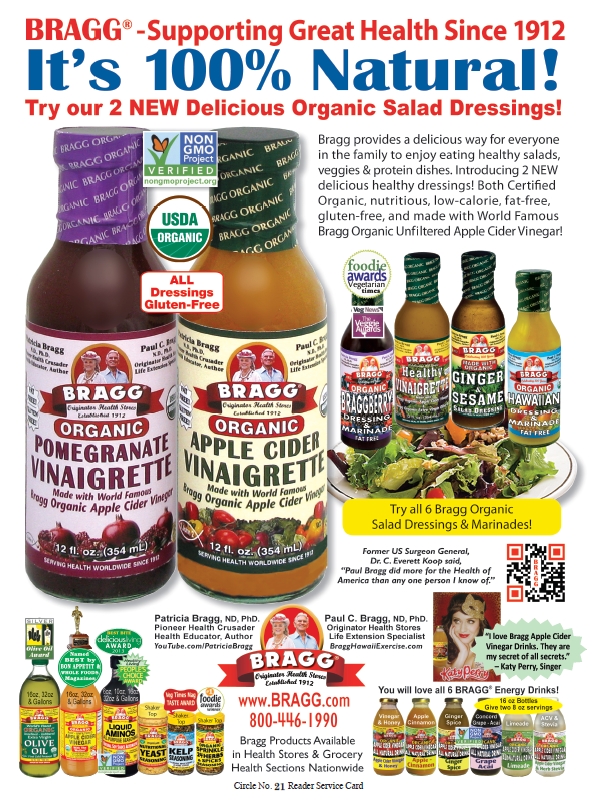 than conventionally grown crops, showed that pesticide residues are found much more frequently in conventional foods, and revealed significantly lower levels of a toxic heavy metal in organic crops,” Batcha says.
than conventionally grown crops, showed that pesticide residues are found much more frequently in conventional foods, and revealed significantly lower levels of a toxic heavy metal in organic crops,” Batcha says.
Sales figures of whole milk indicate to Marquez that interest in “good” fats is on the rise. Roulac sees other possibilities. “I think interest in organic and grass fed meat and dairy is growing,” he says. One reason may be consumer perceptions about the GMO feed that conventionally raised cows and chickens receive. A shortage of quality protein in general, Marquez adds, figures to make organic options into hot commodities in the future.
Roulac also believes that larger food trends, such as interest in greens like kale and ancient grains like quinoa or chia, are translating to the organic market. With such a vast selection of foods available to human beings, he says that to continue to rely on the same couple dozen options that make up the “Standard American Diet” is a recipe for ill health. He says, “We can do much better, and it’s an exciting time for the organic whole food industry to lead the way. Our customers are ready!” WF
|
Freshness, Preserved People often have a hard time getting enough fruits and vegetables in their diet, and one of the many reasons is the cost and hassle of dealing with fresh produce. You buy it, it spoils before it gets eaten, and then it goes in the trash. With organic produce, there is a perception that this can happen even more quickly. But there are several unique products out there that promise to address this issue head on. Contrasting conventional and organic produce, Timmy Chou, president and CEO of Aureus Products Innovations, Inc., Woods Cross, UT, makers of Bluapple, says that the majority of grocery store produce is grown off-shore or south of the Some produce, by the time it hits stores, may have already been “off the tree” for over four weeks. “By denying produce the time to mature and ripen naturally, it cannot develop mature taste and nutrition profiles, but can correspond to a more measured and predictable ripening timeline,” Chou says. Organic and locally grown produce, meanwhile, are generally allowed to ripen naturally, which can make it more nutritious and better tasting. Nearly ripe produce, however, is approaching a threshold after which it can be very difficult to control further ripening and spoiling (think of how a fully yellow banana looks after several days). The ripening process will accelerate, Chou says, if temperature, humidity and/or ethylene gas levels aren’t controlled. Kevin Brooks, COO of BerryBreeze, Las Vegas, NV, notes that spoilage is not just an appearance issue. Though organic produce is often left to ripen naturally, he says, “When that environment and appearance change (usually within a few days), the nutritional value changes due to the onset of spoilage, mold and decay,” he says. To combat this, Brooks says, his company “recreated Mother Nature.” Using activated oxygen, BerryBreeze kills mold, yeast and fungus, primary culprits in spoilage. “When life happens and you need a few extra days to enjoy your fresh produce, you have it. People can now buy with confidence, knowing that your berries or vegetables will be ready when you are, instead of having to eat them the same day, freeze, or juice just so you don’t throw them away.” Chou details the way his company’s freshness preserver is designed to work. “The Bluapple is an ethylene gas absorber that was developed to manage damaging ethylene gas concentrations usually found in enclosed storage spaces like refrigerators,” he says. This approach was already used in commercial applications. Assuming temperature and humidity is properly managed, Chou says the product can increase the lifespan of produce up to three times. Each Bluapple has an ethylene absorbing packet that lasts three months or longer before needing to be replaced. Sophisticated shoppers are among the most enthusiastic users of the product, Chou says, as they are the ones who tend to pick nearly-ripe produce, and they readily realize the cost savings associated with preserving produce longer, rather than throwing it away. In short, organic shoppers are the key demographic. “Although we have no objective data, our anecdotal experience is that the Bluapple-using consumers are more apt to confidently purchase expensive produce,” he says. Likewise, although Brooks says BerryBreeze was designed for any customer who would like to eat fresher and live healthier, many organic buyers seem to be fans, especially since they have already embraced a more sustainable lifestyle. |
|
References
1. D. Charles, “Why The ‘Non-GMO’ Label Is Organic’s Frenemy,” NPR, Feb. 28, 2014, http://www.npr.org/blogs/thesalt/2014/02/28/283460420/why-the-non-gmo-label-is-organic-s-frenemy, accessed July 30, 2014.
2. “Non-GMO Trumps Organic in 2014 Market LOHAS MamboTrack Survey,” Mar. 5, 2014, http://www.prnewswire.com/news-releases/non-gmo-trumps-organic-in-2014-market-lohas-mambotrack-survey-248604731.html, accessed July 30, 2014.
Published in WholeFoods Magazine, September 2014


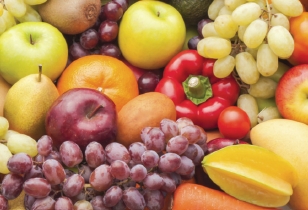 border. “It is picked while it is still very green so that it will have enough of a lifespan to survive the long journey in refrigerated containers,” he says. Then, it is often artificially ripened or kept in storage until ready to be delivered.
border. “It is picked while it is still very green so that it will have enough of a lifespan to survive the long journey in refrigerated containers,” he says. Then, it is often artificially ripened or kept in storage until ready to be delivered.







